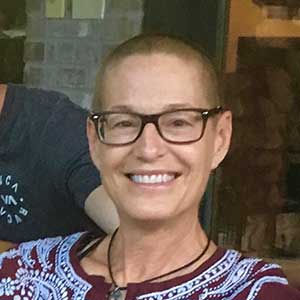Skip To Rehab Listing
Drug and Alcohol Treatment Facility Settings and Therapy Methods in Coachella, CA.
Those in Coachella who have an alcohol and drug dependency problem have multiple local treatment programs from which they can choose like: detox centers, inpatient drug addiction treatment, outpatient substance abuse treatment services, long term rehab programs, short term treatment centers
In addition, people can pick from a variety of approaches to their therapy in order to receive the most effective care, such as: relapse prevention, substance abuse counseling approach, brief intervention approach, group therapy, rational emotive behavioral therapy, dual diagnosis drug rehab
Special Programs for Substance Abuse Recovery
Alcohol and drug rehabs in Coachella can also handle a client's specific substance abuse rehab needs through a variety of special programs. These services can consist of the following: seniors or older adults, suicide prevention services, veterans, substance abuse education, domestic violence, legal advocacy
Treatment Payment Options
The cost of alcohol and drug treatment can be a worry for a lot of patients and their loved ones. That is why local alcohol and drug rehab programs provide several payment options that cater to the various financial situations of patients. Here are some of the forms of payment accepted by these treatment programs: private health insurance, cash or self-payment, military insurance, sliding fee scale, state education funds, access to recovery (atr) voucher
Often, these facilities will work with patients to identify the best form of payment for their needs.
Individuals who struggle with dependency can get high-quality care in Coachella via a wide range of rehabilitation programs, treatment approaches, specialized programs, and payment options. The scope of choice makes alcohol and drug rehab attainable for many local people in need.
Commonly Asked Questions about Addiction and Treatment
What are the causes of drug addiction?
-
Genetic predisposition: Research has shown that genetic factors can contribute to an individual's vulnerability to drug addiction. Certain genes may influence how a person's brain processes and reacts to drugs, making them more prone to addiction.
-
Brain chemistry: Drugs affect the brain's reward system by increasing the release of neurotransmitters such as dopamine and serotonin. This leads to feelings of pleasure and euphoria, which can reinforce drug-seeking behaviors and contribute to the development of addiction.
-
Environmental factors: Exposure to drug use in one's surroundings, such as through family members or friends, can increase the likelihood of experimentation and eventual addiction. Additionally, factors like high levels of stress, poverty, and a lack of social support can increase vulnerability to addiction.
-
Psychological factors: Emotional and mental health issues like depression, anxiety, and trauma can make individuals more susceptible to drug addiction. These issues can lead people to self-medicate with drugs in an attempt to cope, ultimately increasing the risk of addiction.
-
Early exposure: Experimenting with drugs at a young age can increase the likelihood of developing addiction later in life. The adolescent brain is still developing, making it more susceptible to the effects of drugs and the development of addiction.
-
Availability and accessibility: Easy access to drugs can increase the likelihood of drug use and addiction. When drugs are readily available in a person's environment, the chances of experimentation and continued use increase.
How do I stop enabling an addict?
"Helping someone stop enabling an addict can be a challenging process, as the enabler often has deeply ingrained habits and patterns that need to be addressed. Here are some steps to consider:
Recognize Enabling Behavior: First, you need to identify the behaviors that are enabling the addiction. Enabling behaviors can include things like providing money that funds the addiction, covering for the addict's mistakes or responsibilities, or continually forgiving harmful behavior without setting boundaries.
Educate Yourself: Learn about addiction and its dynamics. Understanding that addiction is a disease and not merely a matter of willpower can help change your perspective and reactions.
Set Boundaries: Establish and communicate clear, firm boundaries regarding what you will and won't accept. Stick to these boundaries even if it's difficult.
Stop Rescuing: Refrain from protecting the person from the consequences of their addictive behavior. It is important for them to experience the full impact of their actions.
Encourage Treatment: Instead of protecting the person from their addiction, encourage them to seek professional help. Offer to assist in finding treatment options or attending support groups.
Seek Support: Enabling patterns can be tough to break. Seek help from therapy, counseling, or support groups like Al-Anon. These resources can provide you with tools and strategies to stop enabling.
Practice Self-Care: Ensure you're taking care of your own physical and emotional health. It's easy to get so wrapped up in the addicted person's problems that you neglect your own needs.
Maintain Consistency: It's essential to be consistent with your new approach. If you occasionally slip back into enabling behaviors, the person with the addiction may continue to expect it.
Be Patient: Changing long-standing patterns of behavior takes time, both for you and the person with the addiction. Remember to be patient with yourself and with them.
Remember, You're Not to Blame: Addiction is a complex disease influenced by many factors. It's important to remember that you're not responsible for the other person's addiction or recovery. Your role is to support in healthy ways, not to cure the addiction.
What is a typical day like in an inpatient drug rehab?
Inpatient drug rehab provides a structured environment for individuals recovering from substance use disorders. The specific details of a typical day can vary between facilities, but most will follow a general schedule that includes therapeutic activities, meals, free time, and sleep. Here's a rough outline of what a day in an inpatient rehab might look like:
Morning:
- Wake Up: Residents typically wake up early to start their day. Some facilities may offer morning activities like yoga or meditation to help residents start their day in a calm and mindful way.
- Breakfast: A healthy meal is provided to start the day. This is also a time for social interaction with other residents.
- Group Therapy or Counseling: After breakfast, residents often participate in a group therapy session. This could be a general therapy session or a specific type of therapy such as Cognitive Behavioral Therapy (CBT) or Dialectical Behavior Therapy (DBT).
Afternoon:
- Lunch: After morning therapy sessions, residents will have lunch, often followed by a short break.
- Therapies: The afternoon is typically filled with various therapeutic activities. These could include individual counseling, specialized therapies (like art or music therapy), or educational sessions about addiction and recovery.
Evening:
- Dinner: In the evening, residents will have dinner, which, like all meals in rehab, is typically designed to promote overall health and wellness.
- Evening Group Session: Many rehab centers host an evening group session, which might be a support group, a 12-step meeting, or another form of group therapy.
- Free Time: After the day's structured activities, residents usually have some free time. They might use this time to relax, read, journal, or socialize with other residents.
- Bedtime: To ensure adequate rest, lights-out times are typically enforced.
Throughout the day, residents may also have scheduled times for medication (if applicable), physical exercise, and meeting with their treatment team. The goal of this structured daily routine is to provide a stable, supportive environment that promotes healing and recovery.
It's important to note that the exact schedule and types of activities will vary between different rehab centers and individual treatment plans. When choosing a rehab center, it can be helpful to ask about the daily schedule and types of therapies offered to ensure it aligns with your needs and preferences.












